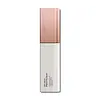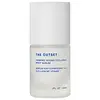What's inside
What's inside
 Key Ingredients
Key Ingredients

 Benefits
Benefits

 Concerns
Concerns

No concerns
 Ingredients Side-by-side
Ingredients Side-by-side

Water
Skin ConditioningAscorbyl Tetraisopalmitate
AntioxidantC15-19 Alkane
SolventPropanediol
SolventHydroxyethyl Acrylate/Sodium Acryloyldimethyl Taurate Copolymer
Emulsion StabilisingMethylpropanediol
SolventSqualane
EmollientGlycerin
HumectantTocopherol
AntioxidantTocopheryl Acetate
AntioxidantHelianthus Annuus Seed Oil
EmollientBiosaccharide Gum-1
HumectantPhenoxyethanol
PreservativeDisodium EDTA
Xanthan Gum
EmulsifyingEthylhexylglycerin
Skin ConditioningCitric Acid
BufferingPolysorbate 60
EmulsifyingSodium Lactate
BufferingSodium Hydroxide
BufferingWater, Ascorbyl Tetraisopalmitate, C15-19 Alkane, Propanediol, Hydroxyethyl Acrylate/Sodium Acryloyldimethyl Taurate Copolymer, Methylpropanediol, Squalane, Glycerin, Tocopherol, Tocopheryl Acetate, Helianthus Annuus Seed Oil, Biosaccharide Gum-1, Phenoxyethanol, Disodium EDTA, Xanthan Gum, Ethylhexylglycerin, Citric Acid, Polysorbate 60, Sodium Lactate, Sodium Hydroxide
Water
Skin ConditioningPropanediol
SolventGlycerin
HumectantTriheptanoin
Skin ConditioningCoco-Caprylate/Caprate
EmollientSodium Polyacryloyldimethyl Taurate
Emulsion StabilisingCapryloyl Glycerin/Sebacic Acid Copolymer
Skin ConditioningCassia Angustifolia Seed Polysaccharide
Skin ConditioningHelianthus Annuus Seed Oil
EmollientHeterotheca Inuloides Flower Extract
MaskingChenopodium Quinoa Seed Extract
Skin ConditioningPoncirus Trifoliata Fruit Extract
Skin ConditioningHydrolyzed Brassica Napus Seedcake Extract
Skin ConditioningSr-Hydrozoan Polypeptide-1
HumectantCastor Oil/Ipdi Copolymer
Diheptyl Succinate
EmollientPhenoxyethanol
PreservativeDilinoleic Acid/Butanediol Copolymer
Caprylyl Glycol
EmollientHydrolyzed Jojoba Esters
Skin ConditioningLysolecithin
EmulsifyingSclerotium Gum
Emulsion StabilisingTetrahexyldecyl Ascorbate
AntioxidantTocopheryl Acetate
AntioxidantTetrasodium Glutamate Diacetate
Pullulan
Xanthan Gum
EmulsifyingJojoba Esters
EmollientSilica
AbrasiveCitric Acid
BufferingSodium Benzoate
MaskingSodium Formate
BufferingSodium Glycolate
BufferingSodium Hydroxide
BufferingSodium PCA
HumectantPotassium Hydroxide
BufferingPotassium Sorbate
PreservativeWater, Propanediol, Glycerin, Triheptanoin, Coco-Caprylate/Caprate, Sodium Polyacryloyldimethyl Taurate, Capryloyl Glycerin/Sebacic Acid Copolymer, Cassia Angustifolia Seed Polysaccharide, Helianthus Annuus Seed Oil, Heterotheca Inuloides Flower Extract, Chenopodium Quinoa Seed Extract, Poncirus Trifoliata Fruit Extract, Hydrolyzed Brassica Napus Seedcake Extract, Sr-Hydrozoan Polypeptide-1, Castor Oil/Ipdi Copolymer, Diheptyl Succinate, Phenoxyethanol, Dilinoleic Acid/Butanediol Copolymer, Caprylyl Glycol, Hydrolyzed Jojoba Esters, Lysolecithin, Sclerotium Gum, Tetrahexyldecyl Ascorbate, Tocopheryl Acetate, Tetrasodium Glutamate Diacetate, Pullulan, Xanthan Gum, Jojoba Esters, Silica, Citric Acid, Sodium Benzoate, Sodium Formate, Sodium Glycolate, Sodium Hydroxide, Sodium PCA, Potassium Hydroxide, Potassium Sorbate
 Reviews
Reviews

Ingredients Explained
These ingredients are found in both products.
Ingredients higher up in an ingredient list are typically present in a larger amount.
Citric Acid is an alpha hydroxy acid (AHA) naturally found in citrus fruits like oranges, lemons, and limes.
Like other AHAs, citric acid can exfoliate skin by breaking down the bonds that hold dead skin cells together. This helps reveal smoother and brighter skin underneath.
However, this exfoliating effect only happens at high concentrations (20%) which can be hard to find in cosmetic products.
Due to this, citric acid is usually included in small amounts as a pH adjuster. This helps keep products slightly more acidic and compatible with skin's natural pH.
In skincare formulas, citric acid can:
While it can provide some skin benefits, research shows lactic acid and glycolic acid are generally more effective and less irritating exfoliants.
Most citric acid used in skincare today is made by fermenting sugars (usually from molasses). This synthetic version is identical to the natural citrus form but easier to stabilize and use in formulations.
Read more about some other popular AHA's here:
Learn more about Citric AcidGlycerin is already naturally found in your skin. It helps moisturize and protect your skin.
A study from 2016 found glycerin to be more effective as a humectant than AHAs and hyaluronic acid.
As a humectant, it helps the skin stay hydrated by pulling moisture to your skin. The low molecular weight of glycerin allows it to pull moisture into the deeper layers of your skin.
Hydrated skin improves your skin barrier; Your skin barrier helps protect against irritants and bacteria.
Glycerin has also been found to have antimicrobial and antiviral properties. Due to these properties, glycerin is often used in wound and burn treatments.
In cosmetics, glycerin is usually derived from plants such as soybean or palm. However, it can also be sourced from animals, such as tallow or animal fat.
This ingredient is organic, colorless, odorless, and non-toxic.
Glycerin is the name for this ingredient in American English. British English uses Glycerol/Glycerine.
Learn more about GlycerinHelianthus Annuus Seed Oil is the oil derived from the seeds of a Sunflower. Sunflower seed oil is non-fragrant. It is an emollient, meaning it helps to soften the skin.
Sunflower seed oil contains many fatty acids. The fatty acids found in sunflower seeds include (from highest amount to least): linoleic acid, myristic acid, palmitic acid, stearic acid, arachidic acid, oleic acid, and linolenic acid.
These fatty acids help the skin create ceramides. Ceramides play a role in repairing the skin barrier.
Helianthus Annuus Seed Oil helps moisturize the skin. This in turn helps the skin look more rejuvenated and smoother.
Sunflowers are rich in vitamin E.
Historians believe Indigenous cultures of North America domesticated sunflowers before corn. Thus they relied on sunflower oil for a variety of uses. One such use is moisturizing skin and hair.
Sunflower seed oil may not be fungal acne safe. We recommend speaking with a professional if you have any concerns.
Learn more about Helianthus Annuus Seed OilPhenoxyethanol is a preservative that has germicide, antimicrobial, and aromatic properties. Studies show that phenoxyethanol can prevent microbial growth. By itself, it has a scent that is similar to that of a rose.
It's often used in formulations along with Caprylyl Glycol to preserve the shelf life of products.
Propanediol is an all-star ingredient. It softens, hydrates, and smooths the skin.
It’s often used to:
Propanediol is not likely to cause sensitivity and considered safe to use. It is derived from corn or petroleum with a clear color and no scent.
Learn more about PropanediolSodium Hydroxide is also known as lye or caustic soda. It is used to adjust the pH of products; many ingredients require a specific pH to be effective.
In small amounts, sodium hydroxide is considered safe to use. However, large amounts may cause chemical burns due to its high alkaline.
Your skin has a natural pH and acid mantle. This acid mantle helps prevent harmful bacteria from breaking through. The acid mantle also helps keep your skin hydrated.
"Alkaline" refers to a high pH level. A low pH level would be considered acidic.
Learn more about Sodium HydroxideTocopheryl Acetate is AKA Vitamin E. It is an antioxidant and protects your skin from free radicals. Free radicals damage the skin by breaking down collagen.
One study found using Tocopheryl Acetate with Vitamin C decreased the number of sunburned cells.
Tocopheryl Acetate is commonly found in both skincare and dietary supplements.
Learn more about Tocopheryl AcetateWater. It's the most common cosmetic ingredient of all. You'll usually see it at the top of ingredient lists, meaning that it makes up the largest part of the product.
So why is it so popular? Water most often acts as a solvent - this means that it helps dissolve other ingredients into the formulation.
You'll also recognize water as that liquid we all need to stay alive. If you see this, drink a glass of water. Stay hydrated!
Learn more about WaterXanthan gum is used as a stabilizer and thickener within cosmetic products. It helps give products a sticky, thick feeling - preventing them from being too runny.
On the technical side of things, xanthan gum is a polysaccharide - a combination consisting of multiple sugar molecules bonded together.
Xanthan gum is a pretty common and great ingredient. It is a natural, non-toxic, non-irritating ingredient that is also commonly used in food products.
Learn more about Xanthan Gum